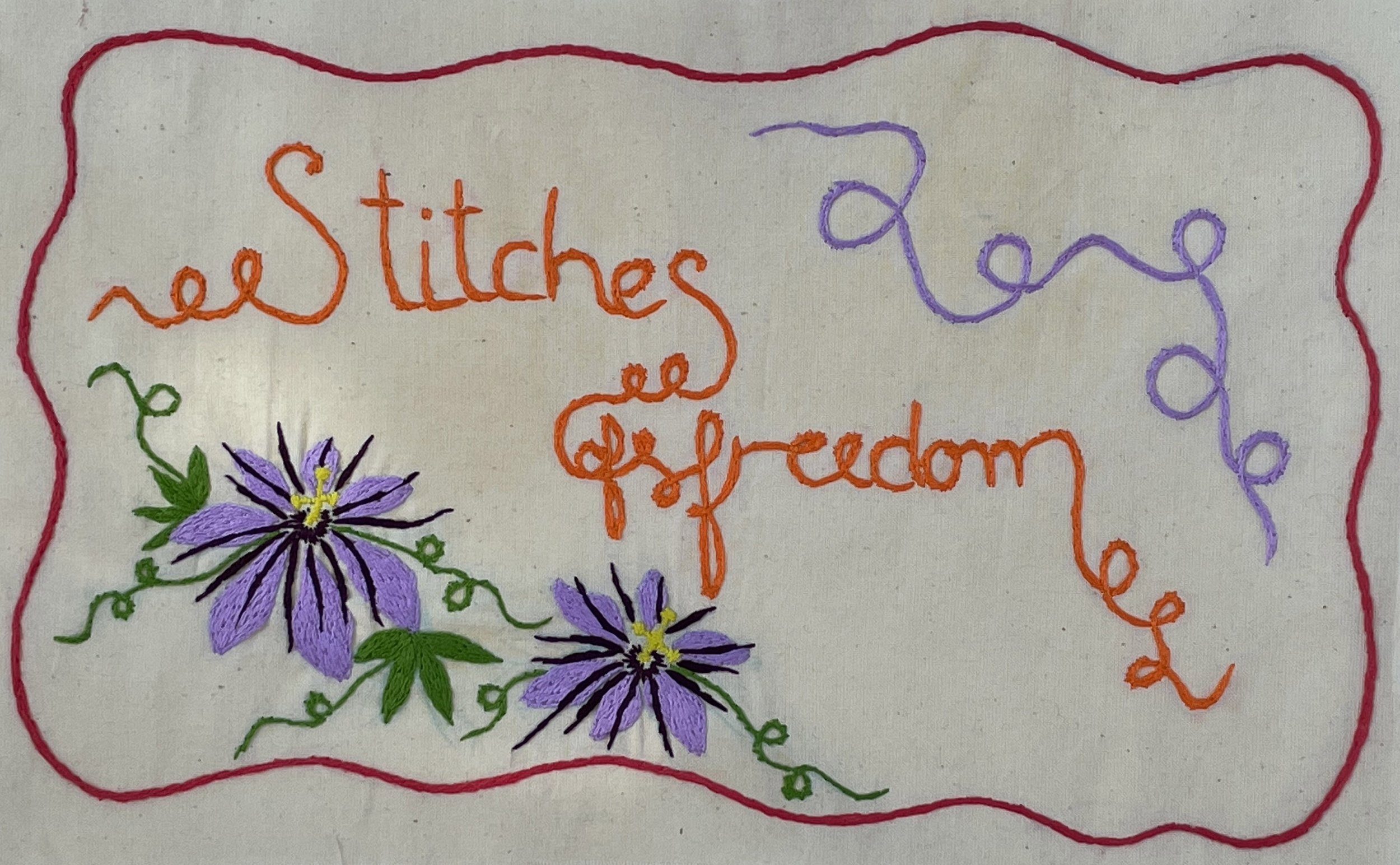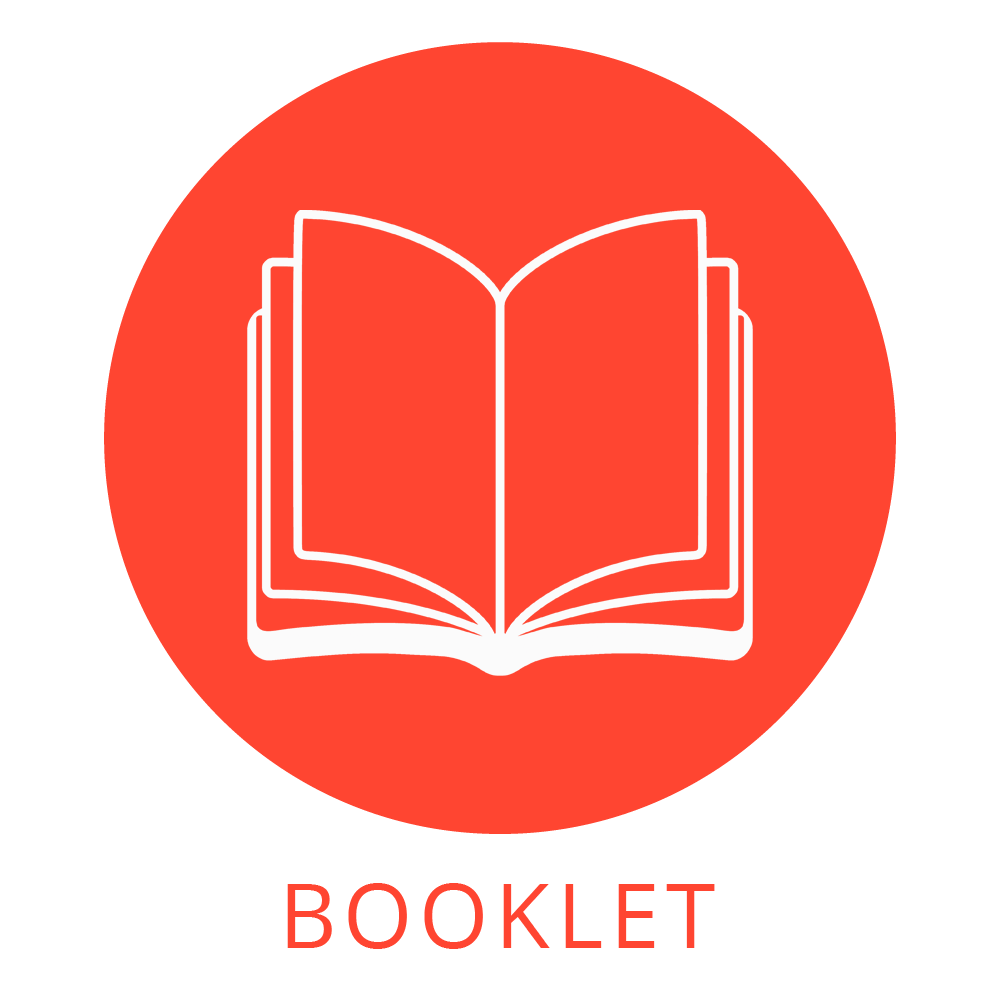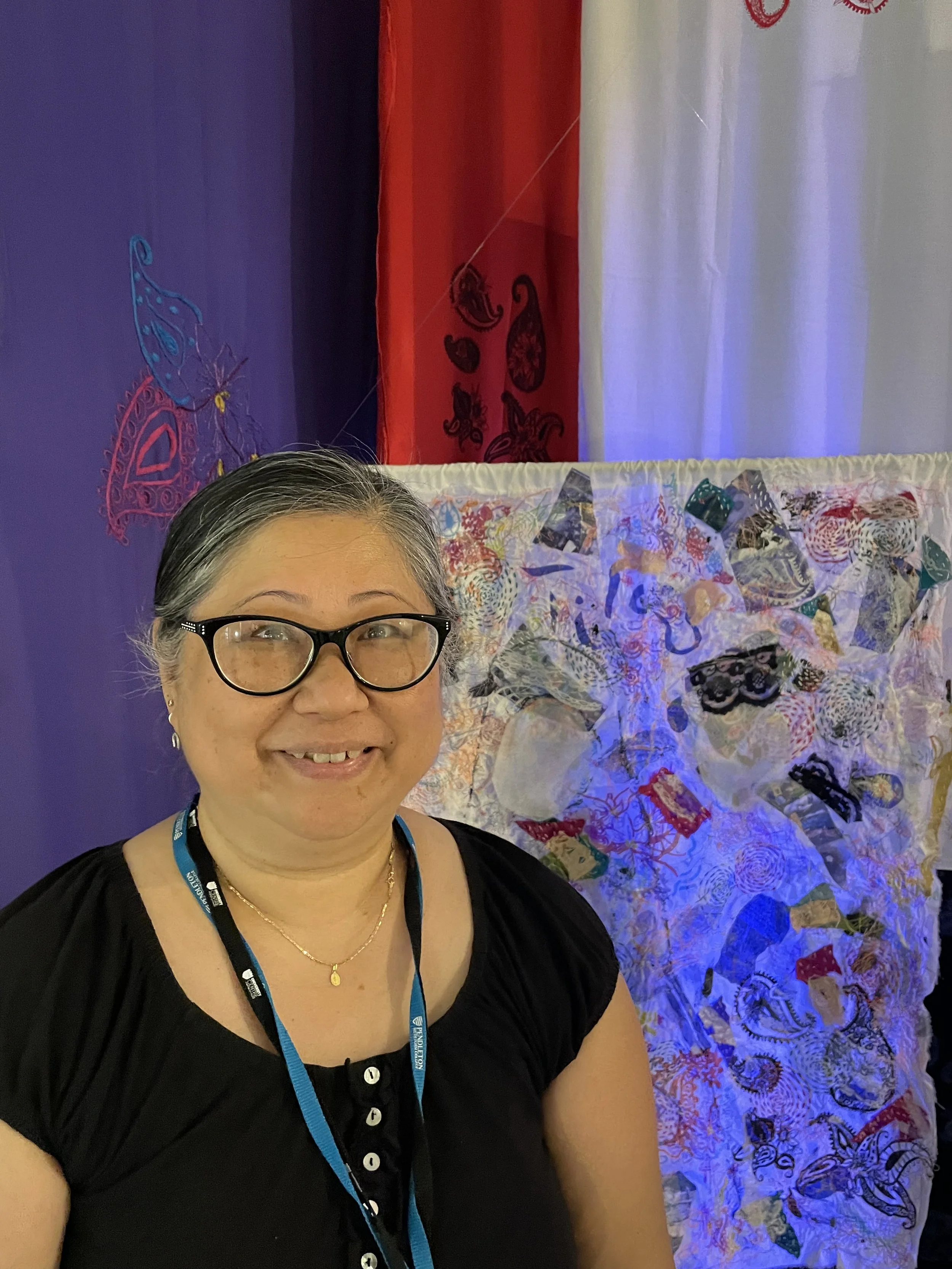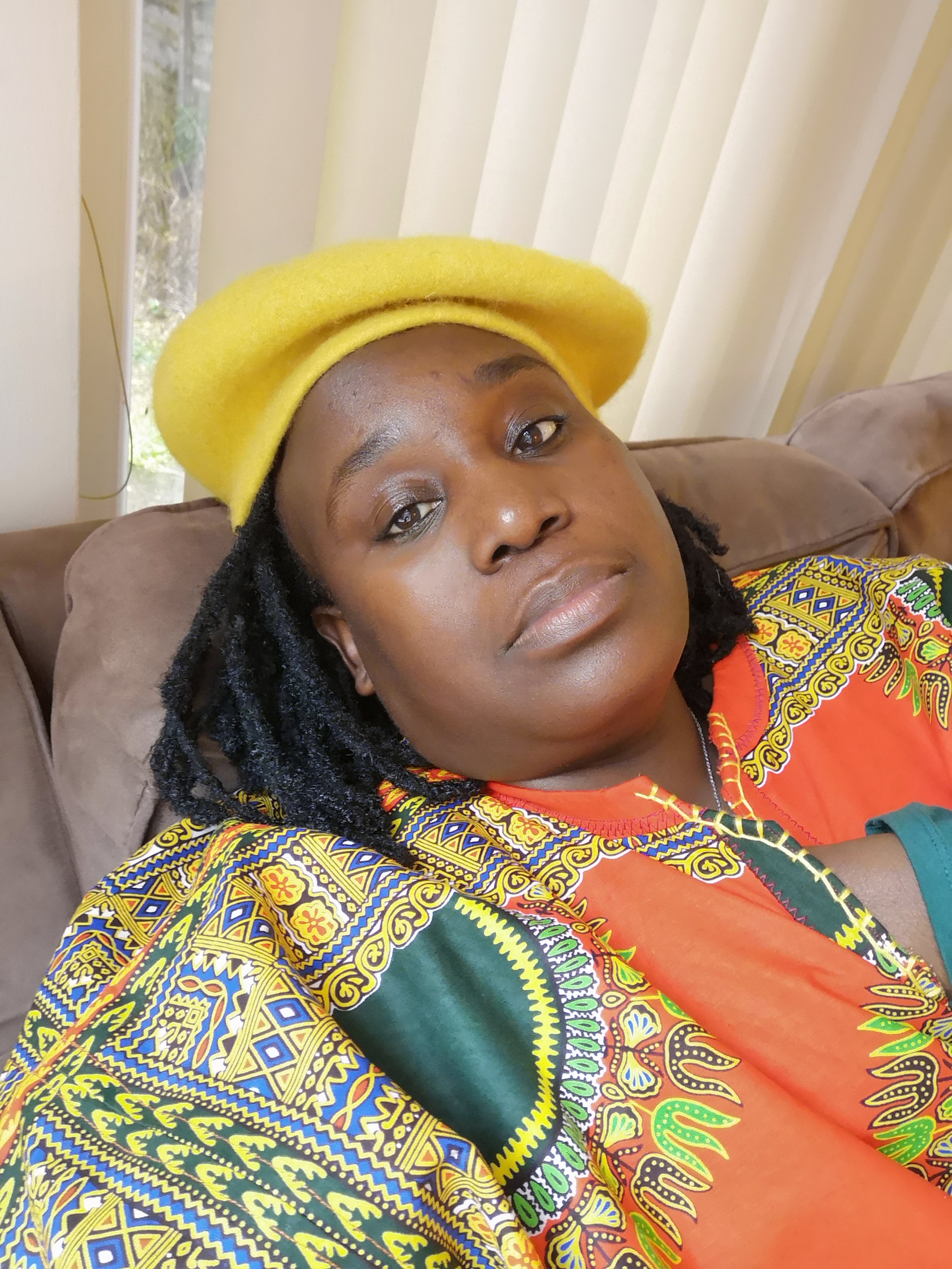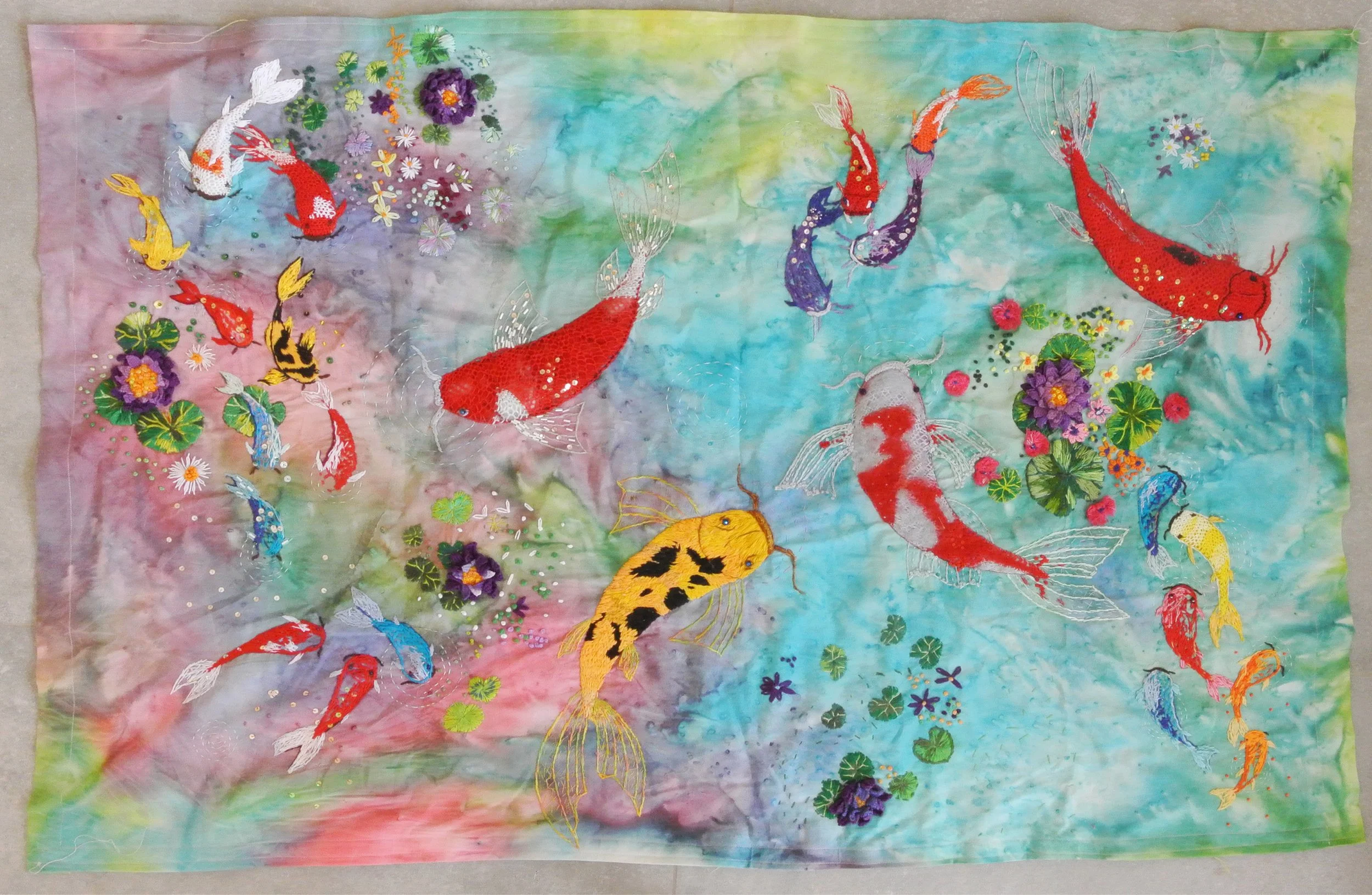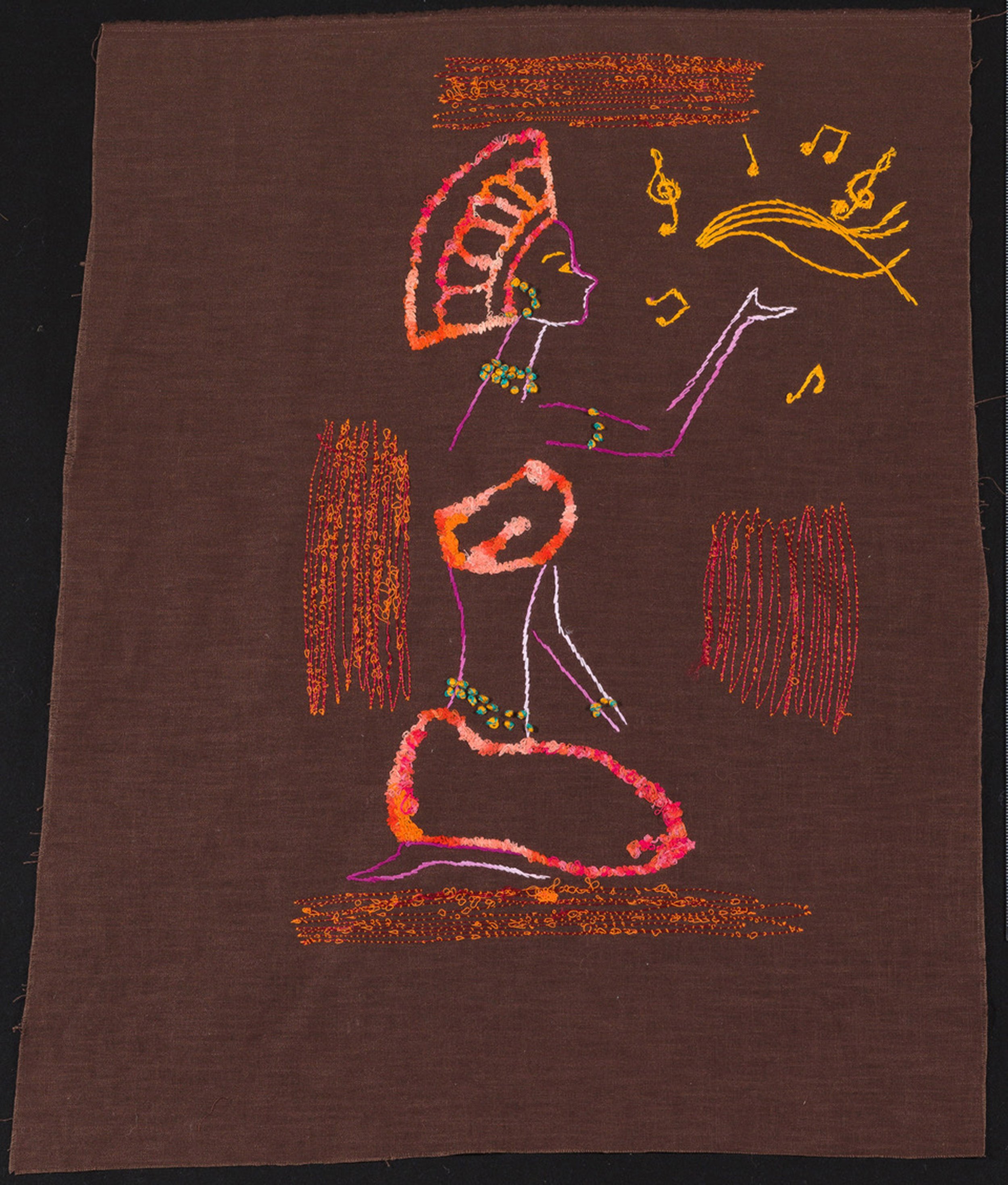MONICA HAMAKAMI | SUSAN KAMARA
Stitches of Freedom
Curated by Alice Kettle, Artist and Professor of Textile Arts at Manchester School of Art, Manchester Metropolitan University and Jennifer Gilbert, Jennifer Lauren Gallery.
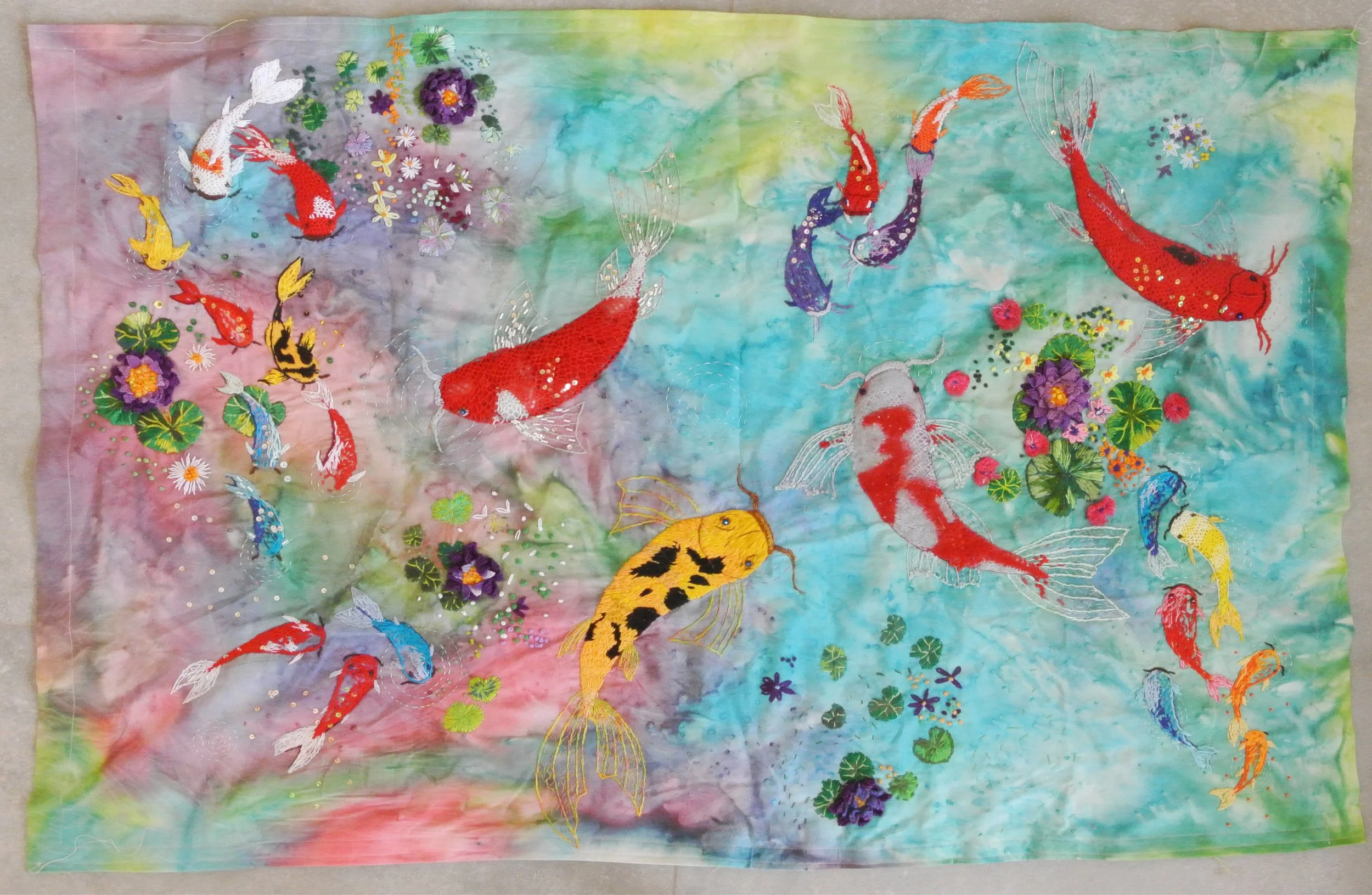
Introduction
Join Alice Kettle and me in a celebration of the work of two refugees that Alice met whilst working on Thread Bearing Witness in 2018 – Monica Hamakami and Susan Kamara. Since that time, Alice has stayed in touch and continued collaboration and support for these two artists, helping them to realise their talents and giving them an outlet for their emotions and life stories. Stitches of Freedom showcases newer and older works, alongside two new collaborative works made specially for this online presentation. Both artists will join Alice and Jennifer for an online talk, as well as an online textile workshop – see below for details on these. Below, Alice shares a little more about her relationship with the artists and her wish to have a legacy for the artists beyond the Thread Bearing Witness project. Enjoy looking at this online presentation.
Alice: “I met Susan and Monica whilst I was working on the Thread Bearing Witness project. This was an art project that used textiles as a process of learning about, connecting with and responding to refugees and others who are seeking asylum. The project reflected a willingness to listen, and to be led and changed by the events and people surrounding us. Creativity and stitch are used as a common language for supporting and welcoming into our communities those who have fled from danger.
I came to know Susan through the Southampton and Winchester Visitors’ group. We meet regularly to draw and make together. She told me stories whilst making extraordinary paintings and textiles, which were included in Thread Bearing Witness. She also introduced me to her friends and other refugees at the Centre and encouraged them to take part in the Stitch A Tree project (part of the Thread Bearing Witness project). This was inspired by the Refugee Resilience Collective, who drew on Gillian Hughes’ Tree of Life, a strength based narrative therapy tool which uses the tree as a creative metaphor on which people are invited to map out their lives, from root to the fruits; from cultural histories to future dreams. We each stitched a tree, which became a collective Forest.
I met Monica through Refugee Action, where we ran workshops to invite contributions to the SKY embroidery, one of the main panels in the project. Monica’s drawings are represented in the embroidery. I discovered that both Susan and Monica are extraordinarily creative and have used their artwork to express their personal stories and experiences. We have continued to work together separately and collaboratively. I introduced them to each other and they have made new work together that expresses this shared new friendship. I am inspired by their integrity, the skill and vision of their work. I continue to learn from them and value them highly as artists and as friends.”

Monica Hamakami (b.1970)
Born and raised in Brazil, Monica Hamakami has lived in Japan and Iran, first coming to the UK in 2009. After deportation, she returned in 2012, now being granted permission to stay. Due to her status as an asylum seeker, Monica was only able to do voluntary work, but found a role volunteering with refugees, supporting others in similar circumstances. It was through this role that Monica first met acclaimed textile artist Alice Kettle, who has been a source of support and inspiration since. At that time, she was in a deep depression, but Alice gave her hope and inspiration to continue with life.
Art gives Monica a sense of belonging and is good for her wellbeing – it is like a therapeutic activity, but one in which Monica wants to create a better life for her and her family. The act of creation brings Monica great pleasure, allowing her to share her feelings through her artwork. Through being part of Alice Kettle’s Thread Bearing Witness project, Monica was encouraged to believe in herself and her talents. Following this project, Monica continued to make art at home and has since been to College to receive a qualification in Art and Design Level 2 and is currently studying on a Professions in Art Access Course.
Her art features animals, flowers and often women’s faces. She likes to showcase women’s strengths and weaknesses and share what she has been through as a female refugee. Eyes feature heavily, as Monica believes that eyes tell powerful stories of what people have been through or seen. Doodles also feature daily as this helps alleviate anxiety and take her mind off life struggles.
Monica often creates her art using embroidery, but more recently has used materials like charcoal and acrylic paint, as she has been learning this through her studying. For Monica, art is like a flower and she wants to see it bloom, so that others can appreciate it and take joy from it too. Art has given Monica a drive and provided a light, and she cannot wait to see what happens next.
Susan Kamara (b.1972)
Born in Uganda, Susan Kamara came to the UK in 2009. Growing up, Susan was surrounded by creative family members, including her grandmother who engaged with embroidery, basket and mat weaving. Inspired by them, Susan studied art, gaining an A level in it, but was then not allowed to be creative until she came to the UK, where she started it up again immediately. She says she has learnt further from observing others, and creating through trial and error.
Susan works across all media, not wanting to be restricted by one medium or another. Much of this comes from watching her family over the years working across different disciplines, and also, her feeling uncomfortable if restrictions are brought in. Being curious, Susan likes to continually try new things, but of late seems to favour thread, using it on anything, such as fabric, canvas or paper. A motif that always features in Susan’s work is the spiral – for her it is a symbol of hope and of change, and also of being on a never-ending journey of new knowledge.
Susan is inspired by fellow mixed media artists who are not afraid to venture into unknown territories with their works, and textile artist Alice Kettle is a huge inspiration and driving force. Susan likes being out in nature for walks and to feel inspired, and alongside her art creation she advises an acting group called World Stages Now. She also works for the NHS, with much of her recent artwork reflecting on the impact that the pandemic has had on staff and patients.
Susan doesn’t want to stop her creation, as she fears it will take her back to a dark place, where there was no colour in her life, and her mind felt empty. She therefore tries to be creative as often as she can and gets lost in it for hours. For her art brings about feelings of calm, love, and happiness. Susan says, “My work is all about diversity, integration and embracing other cultures. We are all here to learn from each other as I always say ‘I am a tree with many branches.”
About the Artists

Alice and I thought it would be lovely to have Monica and Susan collaborate on two new works for this online presentation, echoing the collaboration that has featured throughout their work with Alice and others. Below are the two new works, and information about them. Each artist worked on their piece for two months, and then swapped works in the post, spending a month on the other artist’s piece.
Monica’s new work
Bouquet, 2022
Embroidery on cotton
48x52cm
Bouquet is a piece of art which represents women’s freedom. Unfortunately, in some religious countries, women are forced to wear a compulsory hijab. Bouquet is inspired by many women who cannot show their beautiful hair. In Bouquet, the hair is embroidered with blue threads, which for me, implies sadness, oppression and weakness. Women are seen as second-class citizens with no rights to choose their feelings in these countries. The flowers represent each woman’s fight for her freedom. It highlights their hope for equality. For me, Bouquet shows the inspiration of brave women who risk their lives for dignity. In addition, I used sashiko stitch in rounds and pastel coloured threads, which for me implies patience, serenity and determination. There is hope for justice.
Susan’s new work
Steps of Joy (Orunyege / Entogoro dancer), 2022
Embroidery on cotton
37x55cm
Orunyege dance, from the Bunyoro Kingdom Uganda, is a dance performed by both women and men. The work depicts a female dancer decked in vibrant colours and rattles on her feet. The sound of the rattles (Ebinyege) and vibrant colours combine to bring joy to all that gaze upon the dancer. Gyrating, stamping and the rhythmic sound from the rattles takes away the pain for the moment, and brings joy once longed for. This is usually performed at weddings as a courting dance, but can also be performed at different gatherings to bring joy to the afflicted.
This piece was hand dyed, using natural dyes from Eucalyptus leaves, bark and onion skins in a dye bath. For the second layer I added Derwent Inktense pencils. It was completed with embroidery, including running stitch and French knots.
Collaborative Works

Monica’s artworks
Purple Girl, 2022
Embroidery on canvas
20x30cm
Photograph by Ellie Walmsley
This woman is taken from a photograph that I found, but I stitched in my own choice of colours. I did this piece in purple, as many women are depressed, and purple is a neutral colour between the anger of red, and sadness of blue. For me purple is a calming colour. Many women may present strong on the outside, but inside we do not know how they are feeling.
Garden, 2020
Embroidery on a handkerchief
60x60cm
Photograph by Ellie Walmsley
This piece showcases different flowers from across the seasons. This piece was created during lockdown, and as we couldn’t go outside I began to appreciate my garden more.
Magnolia, 2022
Embroidery on cotton
54x64cm
Photograph by Ellie Walmsley
This piece is about how women relate to flowers – in terms of their beauty.
The Lady, 2022
Charcoal on brown paper
75x54cm
Photograph by Ellie Walmsley
We know this work is not textile based, but it has been recently completed by Monica and is a great example of a work featuring many eyes that she says tell many stories. Using charcoal is a technique Monica has been learning on her current art course in Salford. For Monica, this piece is about the expression of a woman, and about her bravery. The lady is the main focal point, with everything surrounding her face related to her life. The tigers and panthers are related to a mother protecting their child, much like the focal lady. The eyes signify the different expressions and emotions of the woman, including eyes showing happiness and also being frightened. The strawberries and pot of honey signify the sweetness of life. The birds signify freedom, and the mouth made of spicy peppers on the top left, signifies the beauty and sensuality of women. There is a glass of wine for when she tries to relax and there are lots of flowers to signify the fragrance of beauty. I think every woman has a beauty of some form. In my opinion there are no ugly women.
Diversity, 2019
Embroidery on cotton
98x72cm
Photograph by Ellie Walmsley
This piece was originally larger and has been cut down. This piece showcases different aged women from different ethnicities, to demonstrate equality and to show that everyone is the same, everywhere in the world. Harry Baxter has created an audio description about this work.

SUsan’s artworks
Freedom to Swim Free, 2021
Thread on dyed cotton
Photograph by Joe Low
This work shows colourful fish swimming in a pool of flowers. Its optimism represents the freedom and hope all refugees seek. They have fled from repression and danger to find a place of safety where human rights and dignity are respected.
Watch Us from Beyond, 2021
Thread on dyed cotton
130 x 90 cm
Photograph by Joe Low
The stitching in Watch Us from Beyond uses French knots, running stitches, needle threading and crochet to create areas of dense stitch alongside flowing lines on the dyed background. This artwork is about those who have gone before and still watch us from beyond.
Magnolia, 2022
Embroidery on cotton
54x64cm
Photograph by Ellie Walmsley
This piece is about how women relate to flowers – in terms of their beauty.
Singing Lady, 2019
Thread on tie-dyed cotton
40 x 53cm
Photograph by Joe Low
Dancing Lady 2, 2019
Thread on tie-dyed cotton
45 x 53cm
Photograph by Joe Low
These two works depict women in Uganda. They were made by Susan with small contributions from Alice to the background stitch. They show how the two individuals come together through stitching and were presented by Candida Stevens Gallery.
Beauty for Ashes, 2018
Print, felting, beadwork and embroidery on cotton
230 x 120cm
Photograph by Joe Low
Beauty for Ashes shows the stages of entrapment, despair, and crying for help. Being at crossroads, bound by powers stronger than us… finally breaking free through fear and courage, to take that one step. Like the one who holds onto pieces of grass whilst drowning, gasping at their last breath of life.
It describes a transition of my journey from being in bondage, seeking help, to be set free, but not finding it. Finding the courage to flee with nothing. Torn between leaving those that I love so dearly, like my life, and making a decision to set myself free through pain, so those I love so dearly could be set free. Vibrant and bursting with colours, it represents my African heritage, which always gives me joy and courage to go on, in spite of all that comes my way. Harry Baxter has created an audio description about this work.

Thread bearing witness
Here Alice Kettle explains a little more about the Thread Bearing Witness project. Both artists were involved from the outset – Monica was involved through Refugee Action and Susan was involved through Southampton and Winchester Visitors Group.
Thread Bearing Witness was a process of learning about, connecting with and responding to refugees and other individuals seeking asylum, using creativity and stitch as a common language. Invitations were extended to groups and individuals to participate in a variety of ways, which included the gift of drawings for me to translate into stitch. The embroideries – GROUND, SEA and SKY – were surrounded by other artistic contributions. The diversity of the collective creative group is reflected in the diversity of the exhibitions. The collection of works used thread to examine the interconnected social world we live in at a time of increased people movement in Europe, as a consequence of conflict. Thread Bearing Witness simultaneously represents universality and individuality. It utilises metaphorical and physical common threads to create a common ground, that we can all be a part of. SEA speaks of the perilous sea passage made by migrants as seen through the lens of the media. GROUND and SKY reflect other perspectives on a journey and reproduce original drawings in stitch.
All these works were shown in the exhibition at the Whitworth in Manchester and in various other venues around the UK subsequently. At the core of the project was a willingness to be guided by refugees. The thread of continuity between these varying perspectives stems from three core elements: human connectivity, textiles and the creativity of people. The project continues to evolve through various activities and with individuals and groups.
More information: www.threadbearingwitness.com
Thread Bearing Witness and Stitch A Tree were originally conceived for the Whitworth, the University of Manchester and the Discovery Centre, Winchester. It was financially supported by Whitworth Art Gallery, Manchester Metropolitan University and public funding from the National Lottery through Arts Council England, Heritage Lottery Fund. Thread Bearing Witness was also supported by Hampshire Cultural Trust. It originated and was influenced by the work of Tamsin Koumis and others in the refugee centres in Calais and Greece.
Below you can see some sketches and ideas that were developed with the different refugee groups, as well as images of the finished works in situ at the Whitworth in Manchester. Please click on the images to bring them up larger and with their image credit.
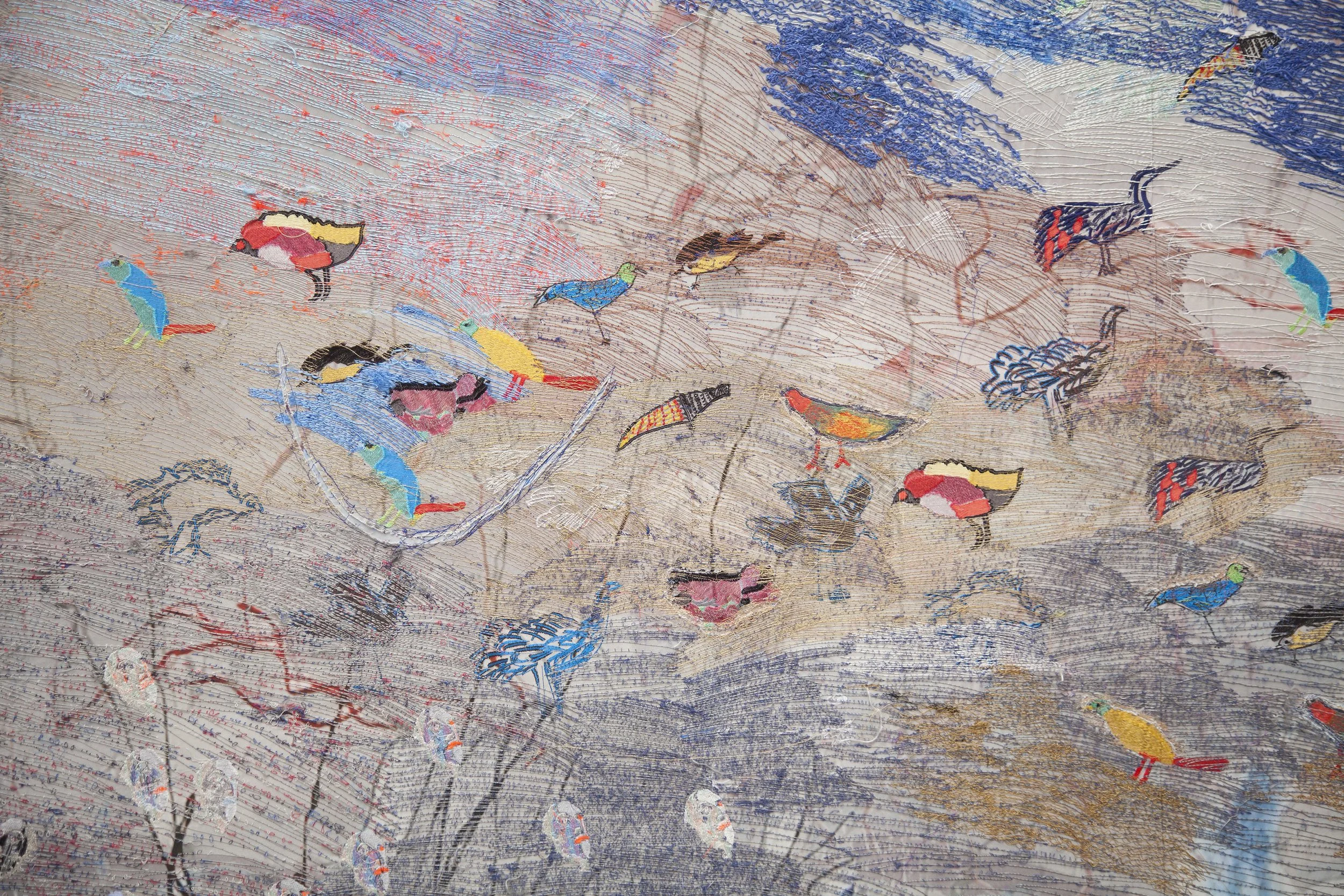
Events
Online talk
Join Alice Kettle in conversation with Monica and Susan, alongside the Jennifer Lauren Gallery on zoom on Monday 8 August from 6-7pm BST.
The talk will have BSL interpretation and live captions through zoom/otter.
It will be recorded and put onto Jennifer’s website, with the transcript, a couple of days after the live event.
THANKS TO THOSE WHO ATTENDED THE ONLINE TALK.
A PDF TRANSCRIPT OF THE CONVERSATION CAN BE FOUND HERE AND A WORD TRANSCRIPT OF THE CONVERSATION CAN BE FOUND HERE
Workshop
There will be one online workshop linked to this online presentation. Monica and Susan will run an online workshop over zoom on Wednesday 17 August from 6-8pm BST. This will be monitored by the Jennifer Lauren Gallery. During this 2 hour workshop you will hear a little from Monica and Susan about their practice. The workshop will begin with learning some simple stitches like running stitch, back stitch and chain stitch, as well as sashiko, French knot and boro stitch techniques. This will lead to building a larger image of a tree, using these and other techniques. This follows on from the Stitch a Tree project, that was part of Thread Bearing Witness. You will need to have your own thread, needle and simple textile fabric to be able to take part in this workshop.
This short clip is taken from the online workshop with Monica Hamakami and Susan Kamara, where they spoke briefly at the beginning about their art practice and a few artworks. Do click on the four arrows in a square facing outwards, in order to view this full screen.
